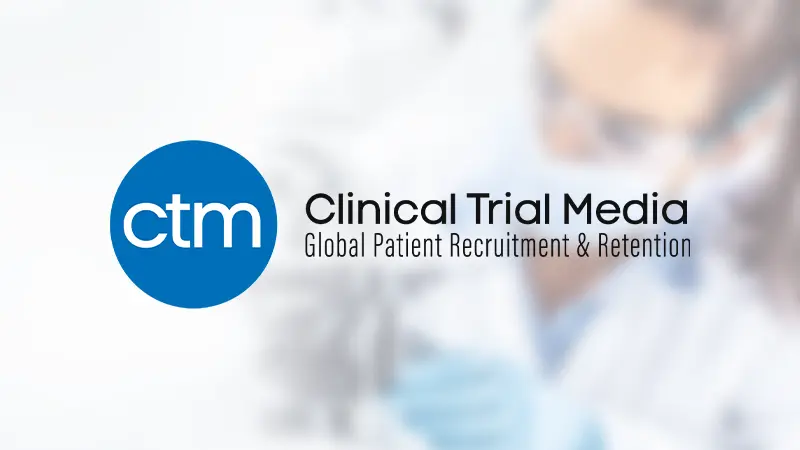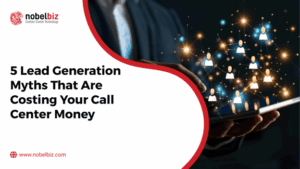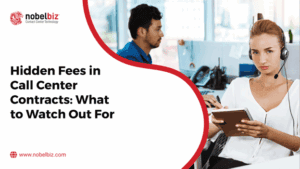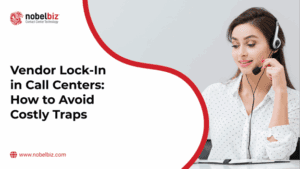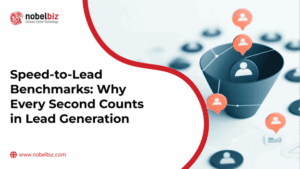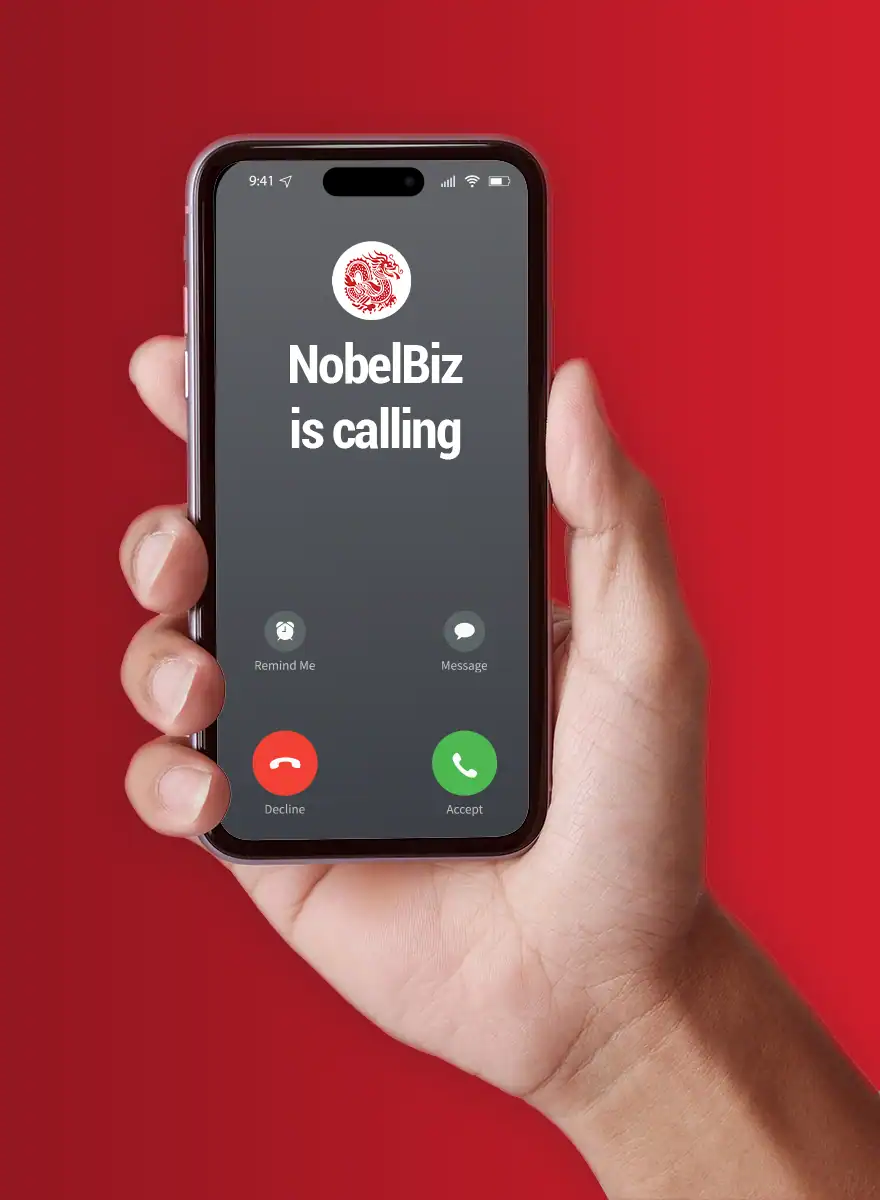Attention is easy to buy in 2025, but compliant, high-quality leads are what truly cost and convert.
As global privacy laws tighten, the economics of lead generation for contact centers have undergone significant changes. Teams are no longer just paying for call volume or reach; they’re paying for consent, trust, and compliance. Regulations such as TCPA, GDPR, and new U.S. state privacy laws have transformed every customer contact into a meticulous, compliant investment.
For call centers specifically, this has meant shifting from a volume-driven dialing strategy to a compliance-first, quality-focused outreach model. Call center operators are now central to lead generation strategy, acting as the frontline for regulatory adherence, data verification, and consent tracking.
It’s evident that with rising demands for verified opt-ins, secure data, and consent tracking, compliance has become a significant business cost. Companies that fail to adapt face more than just lost conversions; they risk fines, reputational damage, and shrinking audience pools. The growing influence of consent laws in lead generation means every interaction must balance reach, privacy, and ROI.
This blog examines how rising lead costs and stricter consent laws are transforming contact center operations, and how forward-thinking teams can maintain compliance while enhancing performance and ROI.
The growing influence of consent laws in lead generation means every interaction must balance reach, privacy, and ROI.
This blog examines how rising lead costs and stricter consent laws are transforming contact center operations, and how forward-thinking teams can maintain compliance while enhancing performance and ROI.
This blog explores how call centers can adapt to these shifts, maintain compliance, and thrive in a performance-driven lead generation landscape.
The Growing Challenge of Compliance-Driven Lead Generation Costs

The cost of lead generation continues to rise as businesses adapt to stricter consent and data privacy laws. For call centers, this evolution is particularly pronounced. Every outbound campaign, script, or dial attempt must now pass legal scrutiny before going live. Here are the primary factors contributing to the increasing cost of compliant lead generation:
1. TCPA Fines Increasing Lead Costs
For contact centers, the Telephone Consumer Protection Act (TCPA) has become a significant factor driving up operational and acquisition costs. With fines ranging from $500 to $1,500 per violation, even minor mistakes, such as dialing a number without verified consent, can result in substantial penalties.
To stay compliant, contact centers are now investing in call tracking systems, consent verification tools, and legal audits to ensure that every outreach meets TCPA standards. While these measures are essential for protecting against fines, they also significantly raise the cost per lead (CPL) and overall cost of running
outbound campaigns
.
2. Cost of Opt-In Compliant Leads
For contact centers, acquiring opt-in compliant leads has become more challenging and expensive. The GDPR and CCPA's impact on lead generation has doubled the cost of verified leads while reducing the available contact lists.
To stay within compliance, contact centers must rely on double opt-in systems, recorded consent, and transparent data policies before making any outreach. This reduces call volumes and increases ad spend, while ensuring higher-quality, risk-free leads. While compliant leads cost more to obtain, they deliver stronger engagement and protect contact centers from legal exposure.
3. Data Privacy Regulations Raising CPL
Global data privacy regulations, such as GDPR and CCPA, as well as new U.S. state laws, have added complex data management responsibilities for contact centers. They must now maintain detailed audit trails, honor data deletion requests, and securely store consent records.
This has made compliance a resource-heavy function requiring specialized software, training, and legal support. This requires specialized software and training for call center agents, turning compliance into a frontline responsibility. As a result, these operational demands directly increase cost per lead (CPL) across outbound and omnichannel campaigns.
4. Compliance Draining Marketing Budgets
For modern contact centers, compliance is no longer an optional task; it’s a built-in operational cost. The TCPA lead cost impact can be felt in every outreach strategy, as higher standards drive up campaign expenses and technology investments.
Budgets once used for dialing efficiency or creative development are now allocated to privacy tools, regulatory monitoring, and compliance management systems. Balancing performance with strict regulations slows execution, increases per-lead costs, and limits the ability of contact centers to scale their outreach aggressively. This shift slows execution, increases per-lead costs, and limits the ability of call centers to scale aggressively.
5. Difficulty Scaling Compliant Lead Generation
Scaling outbound operations under today’s compliance requirements is a significant challenge for contact centers. Each region, channel, and platform has unique consent rules that require careful management and human oversight.
While automation tools and dialing systems help maintain compliance at scale, manual review and monitoring are still necessary to prevent violations. This combination of automation and oversight increases cost and slows growth. Achieving scalability while remaining fully compliant now requires advanced systems, trained staff, and ongoing investment in both technology and compliance operations.
For call centers, navigating these growing requirements isn’t just a legal necessity—it’s a strategic imperative for sustainable, scalable lead generation.
Salman Aslam
Director Support – Quality & Training at WORK Inc.
‘The support team at Nobelbiz understood our business requirements and we we’re able to push through seamlessly’
Lead Generation Cost Benchmark: The Financial Impact of Stricter Consent Laws (2022–2025)
This table highlights how evolving privacy and consent regulations have increased the average cost per lead across key marketing channels between 2022 and 2025.
| Factor | Pre-Regulation Lead Cost | Current (2025) Cost | Impact |
|---|---|---|---|
| TCPA-compliant phone leads | ~$150 | $250–$300 | Higher CPL due to stricter opt-in |
| GDPR/CCPA-compliant email | ~$40–$50 | $80–$120 | Double cost from opt-in rules |
| SMS marketing leads | ~$60 | 100–$150 | Carrier filtering & consent rules |
| Average overall CPL | ~$198 (2022 benchmark) | $250+ | 20–40% increase in 3 years |
Want to focus only on high-quality, compliant leads that actually convert?
Partner with NobelBiz to build
compliance-first lead gen strategies
that deliver real ROI.
Brayan Carpio
Senior Call Center Manager, Call4You Marketing
‘The technology aspect of NobelBiz stood out compared to the competition, and also the great team! All the way from onboarding to support to troubleshooting has been great throughout this journey!’
Why Lead Costs Are Rising in 2025?
The rising cost per lead (CPL) is becoming a serious concern for marketers across various industries. With tighter privacy regulations, changing user behavior, and increased competition, generating quality leads is more expensive than ever. Below are the core reasons behind this spike in rising lead costs:

What Factors Are Driving Up CPL?
Increased Competition Across Channels
For contact centers, competition for attention has intensified across multiple outreach and advertising channels. As more businesses invest in digital lead generation, ad costs on platforms such as Google, LinkedIn, and Meta have increased significantly.
This increased competition drives up cost per lead (CPL) for contact centers trying to attract qualified prospects. With more companies chasing the same limited audience, acquiring high-quality, compliant leads now requires higher bids and stronger value propositions.
Privacy-Centric Platform Changes
Apple’s App Tracking Transparency (ATT), Google’s Privacy Sandbox and the deprecation of third-party cookies have altered how contact centers target and engage with potential leads. With limited access to tracking data, it becomes more challenging to optimize outbound and digital campaigns.
As a result, contact centers must rely more on first-party data and verified consent lists, which increases both the cost and complexity of lead acquisition.
More Sophisticated Buyers
Today’s prospects are more informed and cautious about how their data is used, especially in contact center outreach. They research extensively before engaging, which means agents need more touchpoints and nurturing efforts to build trust.
This longer conversion journey increases lead acquisition costs and requires more effective personalization strategies that align with privacy and compliance standards.
Rising Ad Fatigue
In a crowded digital environment, consumers are exposed to more ads and outreach attempts than ever before. For contact centers, this results in lower response rates and declining engagement across outbound campaigns.
To overcome ad fatigue, contact centers must invest in creative messaging, targeted segmentation, and multi-channel personalization, all of which increase overall marketing and lead generation costs.
Inflation in Paid Media Budgets
Rising global inflation and higher digital ad demand have directly impacted contact center marketing budgets. The costs of paid ads, outbound tools, and customer acquisition continue to rise, driving up the cost per click (CPC) and cost per 1,000 impressions (CPM).
For contact centers already managing tight margins, this inflation compounds the effects of compliance-driven costs, pushing CPL to record highs.
Clinical Trial Media
Mo Pene |
Contact Center Technology Manager @ CTM
‘Thanks to NobelBiz, we now enjoy a robust, scalable communication system tailored to our growing needs, empowering us to deliver personalized care experiences more efficiently and boosting our overall revenue.’
Which Industries are Hit Hardest by Compliance-Driven Costs?
Education, SaaS, and Finance are among the industries most impacted by new consent rules, facing higher CPL due to complex data verification and approval workflows. For sectors handling sensitive data, understanding the impact of TCPA, GDPR, and CCPA on marketing ROI is now crucial for designing effective and sustainable growth strategies.
Industries such as Education (~$982 per lead), SaaS (~$673 per lead), and Finance (~$272 per lead) are among the most impacted by compliance-driven costs. The education sector faces significant expenses due to declining prospective student numbers, stricter data consent policies, and the need for compliant lead capture systems. SaaS companies, targeting niche B2B markets, experience higher costs as they rely on Account-Based Marketing (ABM) and gated content to replace lost tracking capabilities. Meanwhile, the finance industry faces significant regulatory demands under KYC, AML, and data protection laws, which increase the cost of compliant lead generation across every campaign.
Data Insight: Compliance complexity continues to be one of the biggest hidden cost drivers for lead generation teams across regulated industries.
Insight: As compliance regulations evolve, the gap widens between industries that adapt their lead generation models and those that absorb rising costs without structural change.
“We’ve seen too many contact centers wait for a TCPA violation to start building compliance systems. By then, it’s already cost them hundreds of thousands in fines or lost volume.” – Christian Montes, Chief Operating Officer at NobelBiz
The Impact of Consent Laws on Lead Generation
Consent laws around the world are reshaping how businesses reach potential customers. Stricter rules are making traditional lead generation channels more expensive and legally complex. Below is a detailed explanation of how different regulations are impacting costs across voice, email, and SMS campaigns — and how contact centers can help ensure compliance:
How TCPA Impacts Voice Lead Generation in Call Centers
The Telephone Consumer Protection Act (TCPA) places strict restrictions on how and when businesses can contact consumers via phone calls.
- Consent is mandatory: Businesses must get prior express written consent before making any marketing or sales calls using autodialers or prerecorded messages.
- Risk of non-compliance: Each violation of TCPA can result in fines ranging from $500 to $1,500. Even a small-scale campaign can result in significant financial penalties if proper consent isn't obtained.
- Higher operational burden: To stay compliant, companies now invest in call scrubbing tools, consent management systems, and legal audits. This adds both time and cost to voice-based lead generation workflows.
- Lower call volumes: Due to increased legal exposure, many businesses have scaled back or limited their voice outreach efforts to warm leads, thereby reducing overall lead generation throughput.
For contact centers, TCPA compliance has shifted the focus from call volume to call quality and consent verification, resulting in increased costs but reduced long-term legal exposure.
How GDPR and CCPA Affect Email Outreach Costs
The General Data Protection Regulation (GDPR) in the EU and the California Consumer Privacy Act (CCPA) in the U.S. have made email outreach more expensive and restrictive.
- Opt-in is no longer optional: Marketers must now collect explicit, informed consent before sending promotional emails. This has significantly reduced available mailing list sizes.
- Data handling requirements: Companies must provide access to data, options for data deletion, and transparent privacy policies. This adds compliance costs related to legal support and software tools.
- Higher penalty risks: In 2023 alone, GDPR fines across Europe totaled approximately €2.1 billion, showing that regulators are actively enforcing these laws. Even small companies are not exempt from scrutiny.
- Impact on outreach scale: With more rules around list building and email automation, companies are now forced to slow down their outreach or segment lists more carefully, raising CPL.
For contact centers, GDPR and CCPA have redefined email marketing, shifting it from mass outreach to personalized, consent-driven communication that prioritizes trust and compliance.
How SMS Compliance and CTIA Guidelines Raise Acquisition Costs
Text messaging remains a high-conversion channel, but it is now heavily regulated by both law and industry standards.
- CTIA Guidelines enforcement: The CTIA (Cellular Telecommunications Industry Association) requires opt-in proof, clear messaging policies, and dedicated keyword management (like STOP/HELP). Violations can result in carrier filtering or program shutdowns.
- Layered compliance: SMS marketing must also comply with TCPA and local data laws. This means businesses need to maintain records of consent, timestamped opt-ins, and audit trails.
- Higher infrastructure costs: Companies now rely on specialized SMS platforms that provide compliance features, such as double opt-in flows and automated unsubscribe options. These platforms often charge premium fees.
- Lower message throughput: To avoid flags from carriers, businesses send fewer bulk SMS campaigns, shifting to personalized and segmented messages. While more effective, this also increases per-lead costs.
For contact centers, SMS remains a powerful channel; however, compliance has transformed it into a precision-driven strategy, rather than a volume-driven approach, requiring more investment to maintain trust and performance.
Insight: Modern lead generation success hinges on compliance-first design. Contact centers that embrace regulation as a strategic advantage will outperform those treating it as an afterthought.
“Fewer, higher-quality leads don’t just improve sales outcomes — they protect your reputation, your team’s morale, and your bottom line.” – Christian Montes, Chief Operating Officer at NobelBiz
The Real Cost of Non-Compliance: What Every Growth-Focused Business Needs to Know
Stricter privacy and consent laws have made non-compliance a costly risk for businesses. The financial penalties, reputational harm, and operational disruptions that follow can outweigh any short-term gains from non-compliant outreach. Below is a breakdown of the real costs involved.
How Much Do Call Center Businesses Pay in Fines for Non-Compliant Outreach?
Call center businesses face steep fines for failing to comply with consent and privacy laws. Regulators, including the FCC, GDPR authorities, and state agencies, impose heavy penalties for each violation, often running into hundreds or thousands of dollars per contact.
These fines can escalate quickly in large campaigns, turning a single non-compliant action into a multi-million-dollar liability.
The Hidden Cost: Reputation Damage and Deliverability Issues
Non-compliance damages brand trust, which is more complex and costlier to rebuild than paying a fine. Customers and prospects lose confidence in businesses that misuse their data or contact them without consent.
Additionally, email providers and carriers may block or flag non-compliant senders, which can reduce deliverability and the reach of campaigns. This hidden cost erodes marketing ROI over time.
Why Compliance-First Leads are More Expensive But Safer?
Leads acquired with full compliance cost more upfront because they require verified opt-ins, clear disclosures, and legal safeguards.
However, these leads are safer, more engaged, and less likely to trigger complaints or fines. By prioritizing compliance, call center businesses protect themselves from legal action while building a stronger foundation for sustainable growth.
Looking to boost lead conversion and cut inefficiency? With NobelBiz OMNI+, you can accelerate contact speed, improve conversion rates, and maintain full compliance — all from one powerful platform.
Related article:
How to Generate Compliant Leads Without Breaking the Bank?
Businesses seeking to stay competitive must learn how to generate compliant leads at a lower cost by utilizing more intelligent targeting, automation, and first-party data. Below are five proven strategies to reduce lead costs while maintaining compliance and performance, even in the face of stricter regulations.
What Strategies Reduce Cost Per Compliant Lead?
Focusing on high-intent channels, such as content marketing, SEO, and referral programs, helps attract users who are already engaged and more likely to provide consent. Instead of relying on cold outreach, utilize gated assets—like downloadable reports, webinars, or ROI calculators—to encourage voluntary opt-ins.
Contact centers can identify and focus on high-intent prospects using advanced CRM tools and data analysis. Instead of cold calling, agents engage with leads who have already shown interest through website forms, webinars, or inbound inquiries. This improves conversion rates and ensures all outreach is based on verified consent.
The Role of First-Party Data and Opt-in Forms
First-party data ensures compliance and long-term cost efficiency. Collect data directly through website forms, interactive quizzes, and surveys where users willingly share information.
Contact centers help businesses collect and manage first-party data directly from customers. Agents use consent-based forms, verified opt-ins, and secure data handling practices to build compliant databases. This reduces dependence on purchased lists and ensures data accuracy, up-to-date information, and full compliance with privacy laws.
How AI and Automation Lower Acquisition Costs Under Strict Laws?
AI-driven systems and automation platforms streamline lead acquisition and compliance tracking, enhancing efficiency and accuracy. Tools like HubSpot, ActiveCampaign, or Apollo.io can automatically record user consent, segment audiences, and personalize communication at scale.
Modern contact centers use AI-powered systems to manage leads more efficiently. AI tools automatically track consent, score leads, and personalize communication to enhance efficiency and effectiveness. Automation ensures that every call, email, or message adheres to compliance rules, thereby reducing manual errors and operational costs.
Compliance-First Lead Generation Framework
A structured approach is essential for generating leads in today’s privacy-focused environment. A compliance-first framework ensures that all marketing efforts meet legal standards while still supporting business growth. Below are the essential components to building a lead generation system that is both effective and legally sound.
How to Align Marketing and Legal Teams?
Marketing and legal teams must collaborate from the outset of any campaign. Legal helps define the types of data that can be collected, the process for obtaining consent, and the language required in forms and emails. Marketing ensures that these requirements are implemented in a way that maintains a positive user experience. Regular reviews and joint planning prevent compliance issues and reduce campaign delays.
The contact center serves as the operational bridge between marketing and legal teams, turning strategy into action. Legal reviews scripts, call flows, and outreach cadence to ensure compliance, while marketing automation respects consent flags and contact frequency limits. Compliance dashboards monitor opt-outs, DNC adherence, and consent status, ensuring every interaction stays within regulatory boundaries. Agents and outbound tools operate under these approved frameworks, maintaining both efficiency and compliance across campaigns.
Building ICPs that Prioritize Consent-Ready Leads
Ideal Customer Profiles (ICPs) should include criteria beyond demographics or job titles. They should also consider lead sources, user behaviors, and the likelihood of opting in. Prioritizing consent-ready audiences, such as those who engage with compliant channels like webinars or gated content, improves lead quality and reduces legal risk. This approach helps focus marketing efforts on audiences more likely to convert legally and efficiently.
Contact centers play an essential role in validating and refining these profiles through real-time customer interactions, call analytics, and engagement tracking. By identifying patterns—such as response rates, consent status, and preferred communication channels—contact centers help marketing teams focus on consent-ready audiences.
Using Consent Management Platforms Effectively
Consent Management Platforms (CMPs) help track, store, and manage user permissions across multiple channels. They ensure that all interactions—including emails, forms, cookies, and SMS—are logged and compliant. CMPs also automate updates when regulations change. Using these tools effectively simplifies audits, reduces manual work, and provides confidence that every lead in the database meets legal standards.
For contact centers, this means every outbound call, follow-up message, or campaign execution is aligned with the latest compliance requirements. By centralizing consent data and automating updates when laws change, CMPs reduce manual tracking, simplify audits, and protect the organization from compliance risks—all while allowing agents to focus on productive, legally sound conversations.
Related article:
Future Outlook: Lead Costs and Consent in 2025–2030
Experts predict rising lead costs will continue as governments expand privacy frameworks and enforcement tightens globally. Understanding why lead costs are rising in 2025 will help businesses prepare budgets that align with future consent-based marketing realities.
Will Stricter Laws Continue to Raise CPL?
Stricter consent and privacy rules are likely to keep CPL on an upward trend. Enforcement is increasing, and platforms are limiting tracking further. Targeting will rely more on context and first-party data, which takes time and money to build. Budgets will shift from broad prospecting to quality-led capture and nurturing. The result is a higher upfront cost per compliant lead but better lifetime value.
Contact centers will play an essential role in adapting to these changes. By combining first-party data collection, verified consent management, and AI-driven lead scoring, businesses can focus on high-quality, compliant leads instead of mass outreach. While compliant leads may cost more upfront, contact centers ensure higher conversion rates and better lifetime value by maintaining accuracy, transparency, and trust throughout the lead journey.
Which New Regions and Laws to Watch (EU, US states, Global Trends)?
New rules are expanding beyond the EU and California. More U.S. states are passing GDPR-style laws with opt-out rights and data minimization.
The EU’s ePrivacy overhaul and ongoing DSA/DMA enforcement will tighten tracking and platform policies. Countries in APAC and LATAM are rolling out national privacy acts with consent and data transfer limits. Marketers should expect uneven, region-specific requirements and plan for localization.
Contact centers can help businesses stay ahead of these global changes by offering localized compliance expertise. Many modern centers operate internationally, giving them a strong understanding of region-specific regulations.
How Businesses Can Prepare for Compliance-Driven Costs?
Teams should budget for compliance as a core line item in their marketing and operations plans. Priorities include collecting first-party data, managing consent, and establishing secure data pipelines.
Contact centers will play a critical role in achieving this shift. Equipped with integrated CRM systems, real-time analytics, and consent management tools, they can manage outreach more efficiently while reducing human error. By aligning closely with legal and marketing teams, contact centers streamline approval workflows, prevent non-compliant outreach, and maintain clean, verifiable data records.
Outlook Insight: From 2025 to 2030, the most competitive businesses won’t just accept compliance—they’ll master it. Contact centers are central to this transformation, ensuring that every lead is not just legal, but also valuable.
“Fewer, higher-quality leads don’t just improve sales outcomes — they protect your reputation, your team’s morale, and your bottom line.” – Christian Montes, Chief Operating Officer at NobelBiz
Final Thoughts: Balancing Cost and Compliance
As lead generation becomes more regulated, the balance between cost efficiency and legal compliance is no longer optional—it's foundational. The days of volume-first, permission-later outreach are over.
Contact centers sit at the center of this shift. By aligning compliant technologies, consent-first workflows, and transparent communication practices, they can protect marketing investments while strengthening trust with every interaction.
The reality is simple: compliant leads cost more—but they convert better, last longer, and carry less risk. That’s not a tradeoff—it’s an advantage.
Going forward, the most successful organizations won’t just respond to regulation. They’ll lead through it. By embedding compliance into the DNA of lead generation, businesses can adapt faster, grow stronger, and win with integrity.
Conclusion: Compliance is no longer a barrier—it's a strategic differentiator. In an era defined by trust, transparency, and accountability, contact centers that lead with compliance will lead the market.
Transform Your Lead Generation with Smarter, Compliant Solutions
Struggling to keep up with rising lead costs, endless compliance rules, and leads that never convert? Many teams are wasting budget on data that’s outdated, non-compliant, or simply not worth the effort. Implementing stricter laws, such as TCPA, GDPR, and CCPA, can make even simple outreach feel risky.
NobelBiz OMNI+ makes it easier to boost contact rates, improve productivity, and meet every regulation without slowing down your outreach. It helps lead generation teams connect more efficiently, stay compliant, and improve overall performance.
With advanced dialing modes, LocalTouch Caller ID technology , and built-in compliance filters , your team can reach the right people more efficiently, while staying fully compliant with TCPA and state-level regulations. Seamless CRM integration and real-time analytics give agents everything they need to perform smarter and close more leads efficiently.
Facing rising lead costs under TCPA, GDPR, and CCPA? Partner with NobelBiz for compliance-first lead generation that protects your ROI.
Frequently Asked Questions
Discover how NobelBiz helps call centers maximize customer engagement, boost answer rates, and ensure compliance with industry-leading solutions.

Andrei is an experienced marketing professional specializing in propelling growth for both B2B and B2C companies. Proficient in streamlining marketing operations and enhancing lead and customer experiences through SEO and marketing techniques.



